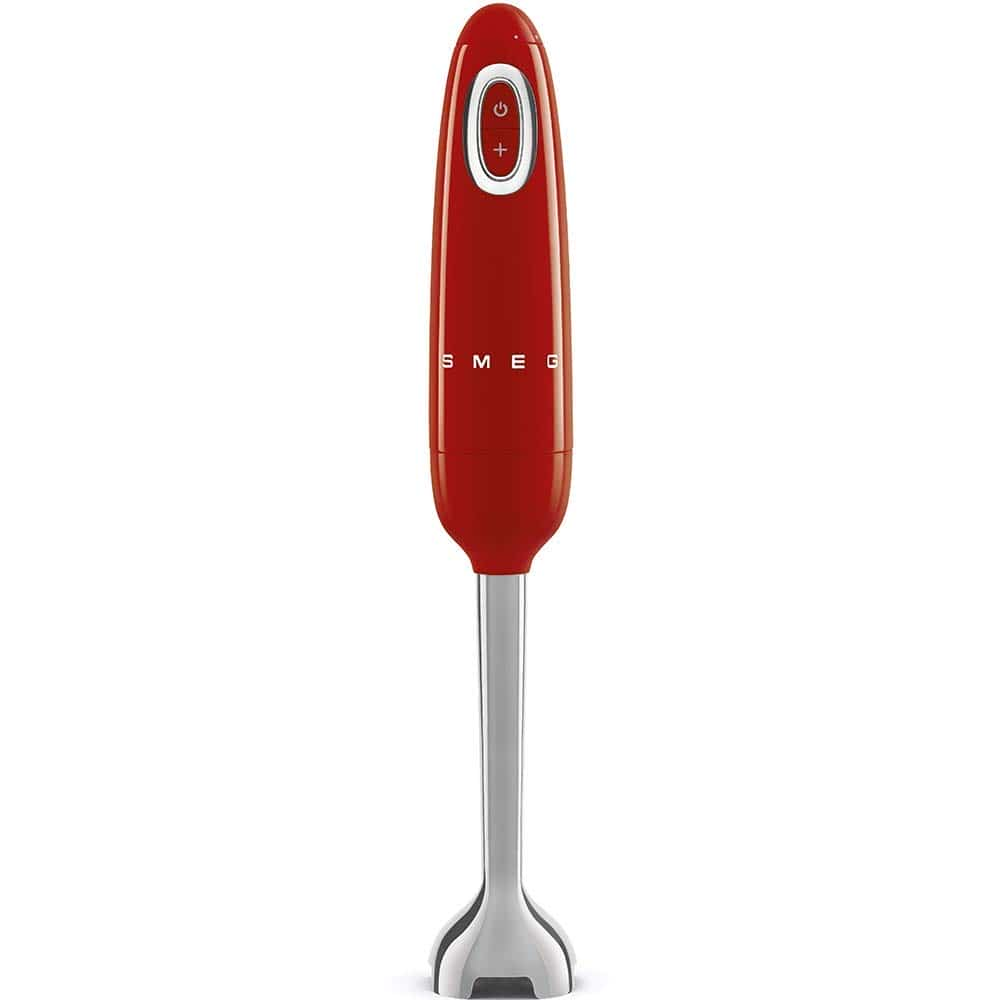Espresso
How Espresso Is Made

As a barista, I am passionate about making the perfect cup of espresso. It’s an art form that requires precision, attention to detail, and a deep understanding of the process. From the quality of the beans to the temperature of the water, every step plays a crucial role in creating a delicious shot of espresso.
The first and most important step in making espresso is selecting the right beans. High-quality beans are essential for a rich, flavorful shot of espresso. I always look for beans that have been roasted recently and have a shiny, oily surface.
Once you have your beans, it’s time to grind them. The grinding process is crucial because it determines the size and consistency of the grounds, which affects the extraction of the coffee. A fine, consistent grind is ideal for espresso, as it allows for a slow extraction and maximizes the flavor.
Key Takeaways
- High-quality beans, consistent grinding, proper tamping, and troubleshooting are essential for a delicious shot of espresso.
- Regular maintenance, cleaning, and descaling of the espresso machine are necessary for high-quality and longevity.
- Milk frothing techniques and temperature are important for achieving the perfect texture for steamed milk.
- Understanding the different espresso drinks and flavor profiles can help choose the perfect one for individual taste preferences.
The Importance of High-Quality Beans
You can’t make a great espresso without using high-quality beans – it’s like trying to paint a masterpiece with low-quality paintbrushes. The quality of the beans used in making an espresso plays a crucial role in determining the taste, aroma, and overall experience of the coffee.
Bean sourcing is a critical factor that determines the quality of the coffee. Coffee beans that are sourced from reputable farms with ideal growing conditions are likely to produce high-quality coffee.
In addition to bean sourcing, the roast level of the beans also plays an essential role in determining the flavor profile of the coffee. Roasting is a delicate process that requires careful attention to detail. The roast level can significantly impact the coffee’s taste, aroma, and body.
Lightly roasted beans typically produce a brighter, fruitier flavor, while darker roasts tend to have a bolder, more complex taste. The roast level must be carefully chosen to achieve the desired flavor profile of the espresso.
The quality of the beans used in making an espresso cannot be overstated. The sourcing and roast level of the beans must be carefully considered to ensure the perfect cup of espresso.
With high-quality beans, the grinding process can begin, which is the next step in making a great espresso.
The Grinding Process
Now, you’ll want to start by selecting the appropriate grind size for your beans. The particle size of the ground coffee will have a significant effect on the flavor and quality of your espresso. For espresso, the ideal particle size is fine, similar to table salt. If the particles are too small, it can result in over-extraction, making the espresso bitter and unpleasant.
If the particles are too large, it can result in under-extraction, producing a weak and watery espresso. It’s also essential to consider the roasting level of your beans when grinding. Darker roasts require a coarser grind, while lighter roasts need a finer grind. This is because darker roasts have less density and are more porous, which requires a coarser grind to prevent over-extraction.
In contrast, lighter roasts are denser and less porous, requiring a finer grind to ensure proper extraction. Once you have selected the appropriate grind size and roasted level, it is time to grind the beans. The best way to grind coffee for espresso is to use a burr grinder, which crushes the beans uniformly, resulting in a consistent particle size.
Blade grinders, on the other hand, can produce an uneven grind, resulting in an inconsistent extraction. Now that you have the perfect grind size and roasted level, it’s time to move on to the next step, the espresso machine. With the right grind, your espresso will have a fantastic flavor, aroma, and crema. However, without a quality espresso machine, you won’t be able to achieve a perfect shot.
The Espresso Machine
When using an espresso machine, it’s important to note that the average American spends over $1,000 a year on coffee shop drinks. That’s a lot of money that could be saved by making your own espresso at home.
However, owning an espresso machine comes with its own set of responsibilities, such as regular maintenance and troubleshooting common issues. Espresso machine maintenance is crucial to ensure that the machine is functioning properly and producing high-quality espresso. This includes regularly cleaning the machine, descaling it to remove mineral buildup, and replacing worn out parts. Neglecting maintenance can lead to a decrease in quality and ultimately, the need to replace the machine altogether.
Despite regular maintenance, espresso machines may encounter common issues such as low water pressure, inconsistent temperature, or clogged filters. Troubleshooting these issues can be frustrating, but it’s important to remain patient and follow the manufacturer’s instructions. Checking the water reservoir, ensuring the machine is properly plugged in, and adjusting the temperature may resolve many of these issues.
As important as maintaining the espresso machine is, equally important is tamping the grounds. This step ensures that the espresso is extracted evenly and produces a flavorful shot.
Tamping the Grounds
When it comes to tamping the grounds for espresso, I believe choosing the right tamper is crucial. A tamper that’s too small or too large can lead to uneven extraction and a less flavorful shot.
Proper technique is also essential, as applying too much or too little pressure can affect the taste and consistency of the espresso.
Lastly, maintaining even pressure throughout the tamping process is critical for ensuring uniformity in the puck and a balanced extraction. As a barista, I take pride in mastering the art of tamping and believe it plays a significant role in producing high-quality espresso.
Choosing the Right Tamper
To make the perfect shot of espresso, you need to have the right tamper – one that fits comfortably in your hand and allows you to apply even pressure to the grounds. When choosing the right tamper, there are a few things to consider.
First, tamper size is important. You want a tamper that is the right size for your portafilter basket. If the tamper is too small, you won’t be able to apply enough pressure to the grounds. If it’s too big, you won’t be able to fit it into the basket at all.
Second, tamper material is also important. Tampers can be made of various materials, including stainless steel, aluminum, and even wood. Each material has its own unique properties, but ultimately, it comes down to personal preference. Some baristas prefer the weight and durability of stainless steel, while others prefer the warmth and feel of wood. Whatever material you choose, make sure it’s of high quality and will last you a long time.
Now that you have the right tamper, it’s time to move on to proper technique for tamping the grounds.
Proper technique for tamping the grounds involves applying even pressure to the grounds in the portafilter basket. This ensures that the water is forced through the grounds evenly, resulting in a balanced and flavorful shot of espresso. To achieve this, you want to hold the tamper vertically and press down with your palm, using a twisting motion to distribute the pressure evenly.
With the right tamper and proper technique, you’ll be able to make the perfect shot of espresso every time.
Proper Technique
Achieving a balanced and flavorful shot of espresso is all about using proper technique when tamping the grounds with the right tamper. One of the most common mistakes that people make when tamping is using too much force or not enough. This can lead to uneven extraction and a shot that is either too bitter or too weak.
To avoid this, it’s important to apply even pressure when tamping, using a straight downward motion and making sure that the tamper is level with the portafilter.
Another important aspect of proper technique is troubleshooting any issues that may arise. If you find that your shots are consistently coming out too bitter, you may need to adjust your grind size or tamp pressure. On the other hand, if your shots are too weak or watery, you may need to increase your tamp pressure or adjust your grind size to make the grounds finer.
By paying attention to these details and making adjustments as necessary, you can ensure that every shot of espresso you make is perfectly balanced and delicious.
As we move into the next section, we’ll explore the importance of even pressure when tamping and how it can impact the quality of your espresso.
Importance of Even Pressure
By maintaining even pressure while tamping, you can elevate the flavor profile of your shot to new heights. The importance of even pressure cannot be overstated when it comes to making espresso.
The goal is to create a compact puck of coffee grounds that allows for consistent water flow during extraction. If the pressure is uneven, water will find the path of least resistance and create channels, resulting in a shot that is under-extracted in some areas and over-extracted in others. This can lead to a sour or bitter taste, and a lack of extraction consistency.
To ensure even pressure, start by using the right amount of coffee grounds and distributing them evenly in the portafilter. Then, press down with a consistent amount of force and make sure the tamper is level. Use your wrist to create a twisting motion as you tamp to distribute the coffee grounds evenly.
This will help to create a level surface that allows for even water flow during extraction. With even pressure, you can achieve a delicious shot with a balanced flavor profile.
Now, let’s move on to pulling the shot and bringing it all together.
Pulling the Shot
Now that the grounds have been tamped, it’s time to pull the shot. This is where timing and volume play a crucial role in creating the perfect espresso.
The goal is to extract the right amount of coffee in a specific amount of time to achieve the desired taste. But it’s not just about the shot’s timing and volume; creating the perfect crema is also key to a great espresso.
Adjusting for taste is the final step in pulling the shot, and it’s where the art of espresso making truly comes into play.
Timing and Volume
When you’re making espresso, it’s important to pay attention to the timing and volume of the water passing through the grounds. These factors can greatly affect the taste and quality of the shot. Here are some things to keep in mind:
-
Brew time: The ideal brew time for a shot of espresso is between 20-30 seconds. Anything shorter will result in an under-extracted shot, while anything longer will lead to over-extraction.
-
Shot size: The standard shot size for espresso is 1 ounce, but some people prefer a double shot (2 ounces). It’s important to keep this in mind when timing the shot, as a larger volume of water will naturally take longer to pass through the grounds.
-
Grind size: The grind size of the coffee beans also plays a role in the timing and volume of the shot. A finer grind will slow down the flow of water and result in a longer brew time, while a coarser grind will speed up the flow and result in a shorter brew time.
-
Tamping pressure: The pressure applied during tamping can also affect the timing and volume of the shot. Too much pressure will slow down the flow of water, while too little pressure will allow the water to flow too quickly.
-
Water temperature: The water temperature can affect the extraction process and the resulting flavor of the shot. The ideal temperature for espresso is between 195-205°F.
By paying attention to these factors, you can create a shot of espresso that is perfectly timed and perfectly sized, resulting in a delicious and satisfying drink.
Now, let’s move on to the next step in creating the perfect crema.
Creating the Perfect Crema
As any experienced barista knows, achieving a rich and velvety crema is essential to creating a truly memorable shot of espresso. The crema, the golden-brown layer that sits atop the espresso, is what gives the coffee its distinctive flavor and aroma. It is a sign of a well-made espresso, and it all starts with the beans.
To create the perfect crema, the beans must be freshly roasted and ground to the right consistency. The water temperature should be around 200°F, and the pressure should be set to around 9 bars. As the hot water is forced through the ground coffee, the crema should begin to form.
The thickness of the crema will depend on the freshness and quality of the beans, the grind size, and the pressure and temperature of the water. A thick, velvety crema indicates that the espresso is well-made and will have a bittersweet flavor that is characteristic of a high-quality espresso.
Adjusting for taste is the next step in creating the perfect shot of espresso. By experimenting with different grind sizes, water temperature, and pressure, a barista can create a shot that is tailor-made to their customer’s preferences.
The perfect espresso should have a balance of sweetness, acidity, and bitterness, with a smooth and velvety texture. With the right techniques and attention to detail, anyone can learn how to make a great shot of espresso.
Adjusting for Taste
Achieving the perfect balance of flavors in a shot of espresso requires experimentation with various factors, such as grind size, water temperature, and pressure, to suit the individual taste preferences of each customer. As a barista, I take pride in making sure that every shot I pull is tailored to the customer’s liking.
Some people prefer a stronger, bolder taste, while others prefer a smoother, sweeter flavor. Experimenting with flavors allows me to adjust for the taste profile that each individual enjoys.
Adjusting for aroma is another crucial element in making a great shot of espresso. The aroma of the espresso should be enticing and inviting, causing the customer’s mouth to water in anticipation of the rich, bold flavor to come. By adjusting the grind size and pressure, I can control the extraction and ensure that the aroma is just right.
The aroma is the first impression a customer has of their espresso, so it’s important to get it just right.
Now, onto the next step of milk frothing to create the perfect latte or cappuccino.
Milk Frothing
To get that perfect latte foam, it’s essential to first heat and froth the milk. The milk temperature should be around 140-150°F to achieve the right consistency and sweetness. When it comes to frothing techniques, there are two main types: steam wand frothing and automatic frothing.
Steam wand frothing involves placing the steam wand of the espresso machine into the milk pitcher and creating steam to heat and froth the milk. This technique requires practice and precision to achieve the desired texture. On the other hand, automatic frothing involves using a separate machine that heats and froths the milk automatically. This method is much simpler, but the texture may not be as consistent as steam wand frothing.
In order to further understand the differences between these two frothing techniques, take a look at the table below:
| Milk Frothing Technique | Pros | Cons |
|---|---|---|
| Steam Wand Frothing | More control over texture and temperature | Requires practice and precision |
| Automatic Frothing | Simpler technique | Texture may not be as consistent |
Now that we’ve covered the basics of milk frothing, it’s important to note that regular cleaning and maintenance of the steam wand or automatic frother is crucial to ensure the quality of the espresso and milk. Neglecting to clean these components can result in a build-up of bacteria and affect the taste of the espresso.
Cleaning and Maintenance
As a barista, I know that cleaning and maintenance are crucial to keeping our espresso machines in top shape.
Daily cleaning is essential to prevent buildup and maintain the quality of our drinks.
Deep cleaning is necessary to remove any stubborn residue and ensure the longevity of the machine.
Regular maintenance, such as replacing worn out parts, is essential to keep the machine functioning at its best.
By taking care of our equipment, we can provide our customers with the best possible espresso experience.
Daily Cleaning
Regular cleaning is essential to keep the espresso machine in top working condition. Not only does it ensure that the equipment is free from harmful bacteria and other contaminants, but it also helps to prevent the buildup of mineral deposits that can clog the machine and affect the taste of the espresso. To maintain the cleanliness of the machine, daily cleaning is recommended.
Daily cleaning involves wiping down the exterior of the machine with a damp cloth to remove any dirt or grime that may have accumulated during use. It also includes cleaning the portafilter, group head, and steam wand after each use to prevent the buildup of coffee oils and milk residue. To make this process easier, I have created a table that outlines the cleaning techniques and equipment sanitation that should be used during daily cleaning. By following these guidelines, you can ensure that your espresso machine stays in top condition and produces delicious, high-quality espresso every time.
Moving onto the next section about deep cleaning, it is important to note that this process is more extensive and should be carried out on a weekly or monthly basis depending on the frequency of use.
Deep Cleaning
Just like how a car needs an oil change, a deep clean is necessary for an espresso machine to maintain its longevity and efficiency. This involves using chemical solutions to break down any built-up residue in the machine’s internal components.
The first step is to remove any removable parts, such as the portafilter and drip tray, and clean them with soap and water. Then, a descaling solution is run through the machine to remove any mineral buildup that can affect the taste of the espresso.
After descaling, it’s important to clean the group head thoroughly as this is where the coffee is extracted. A specialized cleaning brush is used to scrub the group head and remove any remaining coffee oils and residue.
Finally, the machine is reassembled and run through a few cycles of water to ensure that all chemical solutions have been flushed out. By performing regular deep cleaning and equipment maintenance, an espresso machine can last for many years and produce high-quality espresso consistently.
Regular maintenance is just as important as deep cleaning in ensuring the longevity and efficiency of an espresso machine. This involves daily cleaning of the machine’s external components and regular backflushing to maintain the cleanliness of the group head. Neglecting regular maintenance can lead to expensive repairs and a decrease in the quality of the espresso produced. Therefore, it’s important to incorporate both deep cleaning and regular maintenance into your espresso machine care routine.
Regular Maintenance
To keep your machine running smoothly, you’ll want to incorporate daily cleaning and backflushing into your routine maintenance. Preventive measures should be taken to avoid any major damages or repairs caused by neglecting basic upkeep. Here are some tips to help you maintain your espresso machine:
- Clean the steam wand after each use to prevent milk buildup.
- Wipe down the exterior of the machine with a damp cloth to remove any coffee residue.
- Backflush the machine once a week to remove any buildup in the group head and valves.
Additionally, it’s important to troubleshoot any issues as soon as they arise. This will prevent the problem from worsening and potentially causing damage to your machine. Regular maintenance and quick problem-solving will ensure that your espresso machine continues to produce high-quality espresso for years to come.
Transitioning into the subsequent section about common espresso drinks, it’s important to note that understanding the basics of espresso preparation is crucial in making any espresso-based drink.
Common Espresso Drinks
You’re probably familiar with popular espresso drinks like cappuccinos and lattes, but did you know that 43% of Americans consume coffee in some form every day? That’s right, and with so many different espresso-based drinks available, it’s important to understand the flavor profiles of each one.
Let’s start with the cappuccino, which is made with equal parts espresso, steamed milk, and frothed milk. The result is a creamy and smooth drink with a strong espresso taste. The frothed milk adds a slightly sweet flavor and a light texture to the drink.
Next up is the latte, which is made with a shot of espresso and steamed milk. The ratio of milk to espresso can vary, depending on personal preference. Lattes have a milder espresso flavor and a creamier texture than cappuccinos, making them a popular choice for those who want a less intense coffee taste. Some lattes also include flavor syrups or spices, like vanilla or cinnamon, to add an extra kick of flavor.
Understanding the different espresso-based drinks and their flavor profiles can help you choose the perfect drink to satisfy your coffee cravings. Whether you prefer the bold taste of a cappuccino or the creamy texture of a latte, there’s an espresso drink for everyone.
So why not try something new and explore the world of espresso? You never know, you might just find your new favorite drink.
Frequently Asked Questions
What is the history of espresso and how did it become so popular?
I’ve always been fascinated by the rich history and origins of espresso. It all started in Italy in the early 20th century when Luigi Bezzera invented a new brewing process that utilized high pressure and finely ground coffee beans.
This new method resulted in a thick, concentrated coffee that quickly gained popularity among Italians. It wasn’t long before espresso machines were popping up in cafes and restaurants throughout Italy, and eventually, the rest of the world.
Today, espresso is enjoyed by millions of people worldwide and has become a staple in the coffee industry. Its unique brewing process and intense flavor make it a favorite among coffee aficionados, and its popularity shows no signs of slowing down anytime soon.
How does the water temperature and pressure affect the taste of the espresso?
Water temperature and pressure are crucial factors that determine the taste of espresso. The ideal water temperature for brewing espresso is between 195°F and 205°F. If the water is too hot, it can burn the coffee grounds, resulting in a bitter taste. On the other hand, if the water is too cold, it will not extract the essential oils and flavors from the coffee beans, resulting in a weak and watery espresso.
The pressure is equally important as it forces the water through the coffee grounds, creating a rich and creamy crema. The ideal pressure for brewing espresso is between 9 and 10 bars. If the pressure is too low, the espresso will be weak and lacking in flavor. If the pressure is too high, the coffee will be over-extracted, resulting in a bitter and unpleasant taste.
Therefore, to achieve a perfect espresso, it is essential to maintain the right water temperature and pressure.
Can you make an espresso without an espresso machine?
Espresso is a rich and complex beverage that can be made using alternative methods without an espresso machine. Although the flavor differences may not be exactly the same, there are ways to achieve a similar result.
One method involves using a stovetop espresso maker, also known as a moka pot, which uses steam pressure to extract the coffee’s flavor. Another alternative method is the Aeropress, which uses a combination of pressure and immersion to create a strong and bold taste.
These methods may require some experimentation to find the perfect ratio of coffee to water and the right brewing time, but the end result can be just as enjoyable as a traditional espresso.
As a coffee enthusiast, I believe that exploring alternative brewing methods can not only broaden your coffee horizons but also evoke a sense of excitement and adventure in the world of coffee.
Why do some people prefer a single shot of espresso while others prefer a double shot?
When it comes to the espresso shot size debate, there are different schools of thought. Some people prefer a single shot of espresso, while others opt for a double shot.
The reason behind this preference lies in the caffeine content comparison between the two. A single shot of espresso contains roughly 65 milligrams of caffeine, while a double shot has about 130 milligrams.
Therefore, those who prefer a single shot may be more sensitive to caffeine, or they may simply enjoy the flavor and aroma of a lighter espresso. On the other hand, those who choose a double shot may need a stronger kick to start their day or appreciate the added richness and body of a double shot.
Ultimately, the decision between a single or double shot comes down to personal preference and the desired caffeine intake.
Are there any health benefits or risks associated with drinking espresso?
When it comes to the health benefits and risks of drinking espresso, there is a lot of conflicting information out there. Some studies suggest that moderate consumption of espresso may have positive effects on heart health, while others warn of potential risks such as increased heart rate and blood pressure.
Ultimately, the health effects of espresso likely depend on a variety of factors including the processing techniques used to make it. As someone who’s passionate about the technical details of espresso, I find this topic fascinating and am always eager to learn more about how different factors can influence the final product.
Whether you prefer a single shot or a double shot, it’s important to be aware of the potential health benefits and risks associated with drinking espresso and to make informed choices accordingly.
Conclusion
In conclusion, making a great espresso is a combination of science, art, and passion. As a barista, I believe that using high-quality beans and ensuring that they’re freshly ground is crucial.
The process of tamping the grounds and pulling the shot requires precision and attention to detail, as even the slightest variation can affect the taste of the final product. Moreover, the art of milk frothing is equally important as it adds a velvety texture and a pleasant aroma to the espresso.
Finally, the espresso machine needs to be cleaned and maintained regularly to ensure that it produces consistent results. These steps may seem simple, but they require a deep understanding of the brewing process and a true passion for the craft.
As I serve each cup of espresso to my customers, I’m reminded of how these small details and the love for the craft can create a perfect cup of espresso, one that brings joy and satisfaction to the people who drink it.
Arf, an author and an innovative enthusiast of coffee, coffee alternatives, and tea, plays a crucial role as a contributor to the esteemed Cappuccino Oracle platform. Renowned for his curiosity and passion for these captivating beverages, Arf has carved out a unique space for himself in the world of exploration and writing. He realized that coffee, coffee alternatives, and tea are not mere drinks to keep one awake, but universes of flavors and stories waiting to be explored.
Arf’s articles for Cappuccino Oracle blend meticulous research with personal experiences, providing readers with an in-depth understanding of various types of coffee, coffee alternatives, and tea, along with their unique characteristics, cultures, and histories. His honest reviews and engaging narratives guide readers on their own journeys, helping them discover their preferences and find their perfect brew.
Espresso
Unleash Your Inner Barista: Brewing Espresso in the Great Outdoors

Are you tired of the boring routine of making your morning coffee inside? We have a new and exciting experience for you! Picture waking up to the tranquil beauty of nature, with stunning views all around, while savoring the delicious taste of gourmet coffee.

In this article, we’ll guide you on how to unleash your inner barista and brew espresso in the great outdoors. So, grab your equipment and join us on this exciting journey of becoming a barista in nature’s embrace.
Let’s get brewing!
Key Takeaways
- Brewing espresso outdoors allows you to experience peace and tranquility, connect with nature, and appreciate the brewing process.
- To enhance your outdoor espresso brewing experience, adjust the grind size using the Flair Royal hand grinder and pre-measure your coffee beans for consistency.
- It is important to be responsible in the outdoors by packing out used coffee grounds and trash, following local waste disposal regulations, and incorporating sustainable practices.
- The Flair PRO 2 Manual Espresso Maker offers easy maintenance, versatile brewing techniques, and complete control over the brewing process, resulting in exceptional espresso quality.
The Equipment You’ll Need
First, let’s talk about the equipment you’ll need to brew espresso in the great outdoors. When it comes to brewing espresso outside, choosing the right location is key. Find a serene spot, surrounded by nature’s beauty, where you can immerse yourself in the process.

Now, let’s not forget the importance of water quality. For a truly exceptional espresso, start with pristine water. Consider using filtered or bottled water to ensure the purest flavor.
As for the equipment, you’ll need a reliable water heating system, like the JetBoil Flash, to achieve the perfect temperature. Pair it with the Flair PRO 2 Manual Espresso Maker and the Flair Royal Hand Grinder for precision grinding and extraction.
With these tools in hand, you’ll be ready to unleash your inner barista and create a magical espresso experience in the great outdoors.
Benefits of Brewing Outside
Why should we choose to brew espresso outside and experience the benefits it offers? Brewing espresso in the great outdoors allows us to embrace nature while indulging in our passion. It is a truly immersive experience that brings us closer to the process and the flavors we love. Imagine waking up to the peaceful escape and tranquility of nature, surrounded by spectacular views and breathtaking landscapes.
As we brew our espresso, we feel connected to the earth, mindful of our actions, and grateful for the moment. The whole process becomes a mindful experience, where we savor each step and each sip.
Brewing outside creates memorable moments, allowing us to appreciate the beauty of nature while enjoying our favorite drink. It’s an intimate journey that combines the art of brewing with the wonders of the natural world.

Benefits of Brewing Outside Embracing Nature While Brewing Peaceful Escape and Tranquility Feel the serenity of nature while brewing your espresso. Spectacular Views and Breathtaking Landscapes Surround yourself with the beauty of the outdoors as you enjoy your drink. Embracing the Process and Connection with Nature Connect with the earth and the brewing process, feeling grounded and in harmony. Mindful Experience and Indulging in Flavors Engage your senses, appreciating every sip and the flavors that nature provides. Creating Memorable Moments Forge lasting memories as you combine your love for brewing with the wonders of nature.
Tips for Outdoor Espresso Brewing
Here are some essential tips to enhance our outdoor espresso brewing experience:
-
Grind Size Adjustment: The key to a perfect espresso lies in the grind size. With the Flair Royal hand grinder, we’ve the flexibility to adjust the grind size to our preference. Whether we prefer a fine grind for a bold and intense flavor or a coarser grind for a smoother taste, the choice is in our hands.
-
Pre-Measuring Coffee Beans: To ensure consistency and convenience in our outdoor brewing, it’s essential to pre-measure our coffee beans. By weighing and pre-dosing the coffee, we can eliminate guesswork and achieve the perfect coffee-to-water ratio every time. This step not only saves time but also guarantees a delicious cup of espresso.
-
Practicing Patience and Enjoying the Journey: Outdoor espresso brewing is more than just making a cup of coffee. It’s about embracing the process, being mindful of our surroundings, and immersing ourselves in the experience. Take a moment to appreciate the aroma, savor each sip, and create lasting memories in the great outdoors.

With these tips, we can elevate our outdoor espresso brewing to new heights of flavor and enjoyment.
Being Responsible in the Outdoors
Let’s talk about the importance of being responsible in the outdoors when brewing espresso.
As passionate coffee enthusiasts, it’s crucial that we prioritize sustainable practices and leave no trace behind. When enjoying our outdoor brewing adventures, we must remember to pack out used coffee grounds and trash, minimizing our impact on the environment.
It’s essential to be environmentally aware and follow local waste disposal regulations, preserving the beauty of nature for future visitors. By incorporating sustainable practices, such as using reusable coffee filters and opting for biodegradable packaging, we can make a positive difference.

Let’s embrace our love for espresso while also being mindful of the impact we’ve on the outdoors. Together, we can create memorable moments and protect the environment we cherish.
Introducing the Flair PRO 2 Manual Espresso Maker
We are excited to introduce the Flair PRO 2 Manual Espresso Maker, a compact and portable coffee maker that allows us to brew high-quality espresso in the great outdoors. With its sleek design and exceptional performance, the Flair PRO 2 is a must-have for coffee enthusiasts who crave a rich and flavorful espresso experience.

Here are three reasons why the Flair PRO 2 is the perfect companion for your outdoor brewing adventures:
-
Easy Maintenance: The Flair PRO 2 is built to last, with durable materials and a simple cleaning process. Its removable brew head and portafilter make maintenance a breeze, ensuring that your espresso maker stays in top shape.
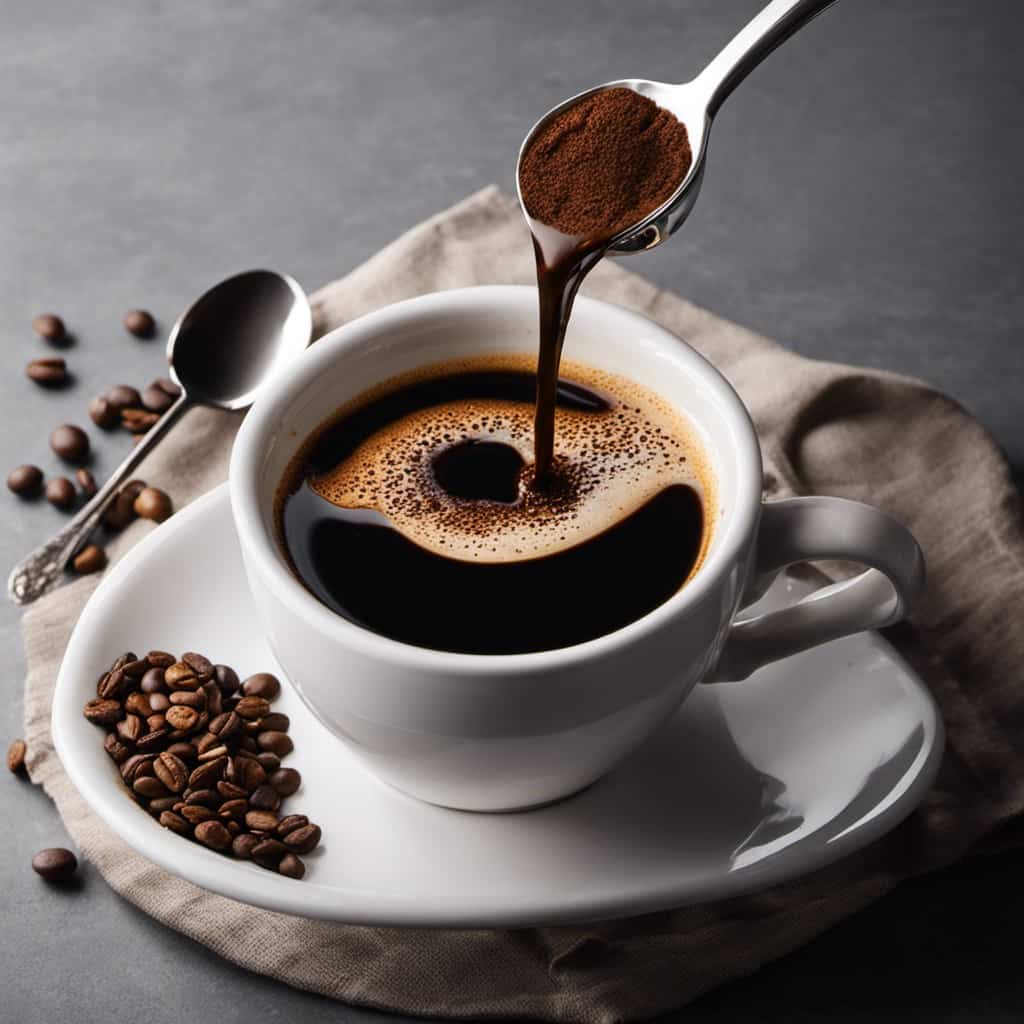
-
Versatile Brewing Techniques: The Flair PRO 2 offers a wide range of brewing techniques, allowing you to experiment and tailor your espresso to your taste. From manual pre-infusion to pressure profiling, this espresso maker gives you complete control over every aspect of the brewing process.Exceptional Espresso Quality: The Flair PRO 2 is designed to deliver exceptional espresso shots, with its precise temperature control and pressure regulation. Whether you prefer a smooth and balanced flavor or a bold and intense shot, the Flair PRO 2 will consistently produce espresso of the highest quality.
With the Flair PRO 2 Manual Espresso Maker, you can elevate your outdoor brewing experience to new heights. From maintenance to brewing techniques, this espresso maker has everything you need to unleash your inner barista in the great outdoors.
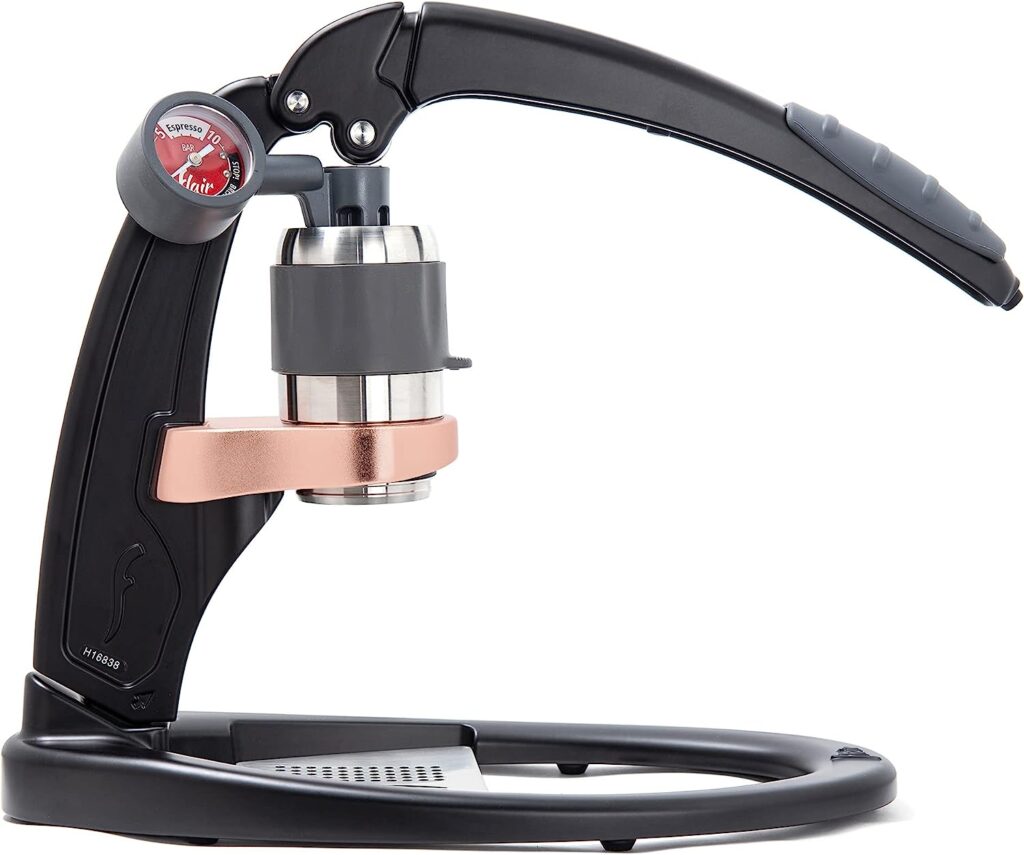
Compact and Portable Design
With its compact and portable design, the Flair PRO 2 Manual Espresso Maker is the perfect espresso machine to take on your outdoor adventures.
This sleek and lightweight espresso maker is specifically designed to be easily transported, allowing you to enjoy your favorite espresso wherever your explorations may take you. Its compact size ensures that it won’t take up much space in your backpack or camping gear, making it an ideal companion for any outdoor enthusiast.
The Flair PRO 2 Manual Espresso Maker’s portability doesn’t compromise on performance either. It’s equipped with high-quality components and features that deliver exceptional espresso shots, ensuring that you can savor the rich flavors and aromas of specialty coffee even in the great outdoors.
Precision Grinding With the Flair Royal Hand Grinder
To achieve the perfect grind size for your outdoor espresso brewing, we recommend using the Flair Royal Hand Grinder and carefully adjusting the settings to ensure precision and consistency. The grind size adjustment feature of the Flair Royal Hand Grinder allows you to have full control over the extraction process, maximizing the flavors and aromas in your espresso.
Here’s why the Flair Royal Hand Grinder is the ideal choice for precision grinding:
-
Consistent Grind: The grinder’s high-quality burrs ensure a uniform grind size, resulting in a balanced extraction and a rich, flavorful espresso.
-
Easy Adjustment: With its simple and intuitive grind size adjustment mechanism, you can easily switch between fine, medium, and coarse settings to match your desired brewing method.
-
Maximizing Extraction: By dialing in the grind size, you can optimize the extraction process, ensuring that the water extracts the desired flavors from the coffee grounds, resulting in a well-balanced and delicious cup of espresso.
The Flair Royal Hand Grinder is the perfect companion for outdoor espresso brewing, providing the precision necessary to create a truly exceptional coffee experience.

Using Specialty Coffee for Optimal Flavor
For the best flavor experience, we recommend brewing your outdoor espresso with specialty coffee. Specialty coffee beans are carefully selected and roasted to bring out the unique flavors and characteristics of each variety. When choosing the right beans for your outdoor brewing, consider factors such as origin, roast level, and flavor profile. Experiment with different varieties to find your preferred taste.
To further enhance the flavor of your outdoor espresso, it’s important to use brewing techniques that bring out the best in your chosen beans. Adjusting the grind size, water temperature, and extraction time can all impact your espresso’s flavor profile.
Try using a coarser grind and a higher water temperature for a bright and fruity espresso. For a more balanced and chocolaty flavor, opt for a finer grind and a slightly lower water temperature.
Table: Brewing Techniques for Different Flavors
Flavor Profile Grind Size Water Temperature Bright and Fruity Coarser Higher Balanced and Chocolaty Finer Slightly Lower
Reliable Water Heating System for Quick Boiling
We rely on a portable and efficient water heating system, like the JetBoil Flash, to quickly boil water for our outdoor espresso brewing. When it comes to brewing espresso in the great outdoors, having a reliable water heating system is crucial. Here’s why the JetBoil Flash is our go-to choice:
-
Speed: With its powerful burner, the JetBoil Flash can bring water to a rolling boil in just a matter of minutes. This means we can enjoy our espresso without any unnecessary waiting around.
-
Convenience: The JetBoil Flash is compact and lightweight, making it easy to transport and set up wherever we go. Its simple and intuitive design allows for effortless operation, even in the most remote locations.
-
Versatility: While the JetBoil Flash excels at boiling water, it also offers alternative heating options, such as simmering and frying. This versatility allows us to expand our outdoor cooking options beyond espresso, making it a valuable addition to our camping gear.
With the JetBoil Flash by our side, we can confidently brew our espresso in the great outdoors, knowing that we’ve a reliable and efficient water heating system at our disposal.

Embrace Your Inner Barista in the Great Outdoors
As coffee enthusiasts, experiencing the great outdoors allows us to embrace our inner barista and connect with the art of brewing espresso. There’s something truly magical about being surrounded by nature, with the soothing sounds of birds chirping and the gentle breeze caressing our faces, as we prepare our favorite cup of coffee.
It’s a moment of tranquility and connection with the world around us. Mindful coffee brewing in the outdoors allows us to fully appreciate the process, from weighing and pre-dosing the coffee beans to carefully adjusting the grind size. We can take our time, savoring the aroma and flavors, while immersing ourselves in the beauty of our surroundings.
It’s a chance to create lasting memories and indulge in the simple pleasures of life. So, let’s grab our equipment, find a serene spot, and let nature inspire our inner barista.
Frequently Asked Questions
Can I Use a Different Manual Espresso Maker for Outdoor Brewing?
Yes, you can use a different manual espresso maker for outdoor brewing. There are many portable espresso makers for camping that offer the convenience and quality you need to enjoy a delicious espresso in the great outdoors.

How Do I Determine the Ideal Grind Size for My Outdoor Espresso Brewing?
To determine the ideal grind size for outdoor espresso brewing, we carefully adjust the grind while considering the desired brew time. This ensures a rich and flavorful cup of espresso that perfectly captures the essence of the outdoors.
Are There Any Specific Types of Specialty Coffee That Work Best for Outdoor Espresso Brewing?
The best coffee beans for outdoor brewing techniques should be specialty beans from reputable local roasters. They offer optimal flavors that enhance the outdoor espresso experience, creating a truly indulgent and memorable moment.
Can I Use a Different Water Heating System Instead of the Jetboil Flash?
Yes, there are alternative water heating systems you can use instead of the Jetboil Flash. We have found success with other portable options like the MSR PocketRocket or the Primus Lite+.
What Are Some Additional Ways to Minimize My Impact on the Environment While Brewing Espresso Outdoors?
To minimize our impact on the environment while brewing espresso outdoors, we can prioritize eco-friendly coffee bean sourcing and opt for sustainable packaging options. It’s important to make conscious choices that align with our values and protect the planet we love.
Conclusion
As we bid farewell to the comforting routine of brewing espresso indoors, we embark on a thrilling journey of becoming outdoor baristas.
With the Flair PRO 2 Manual Espresso Maker as our trusty companion, we unlock a world of rich flavors and breathtaking views.
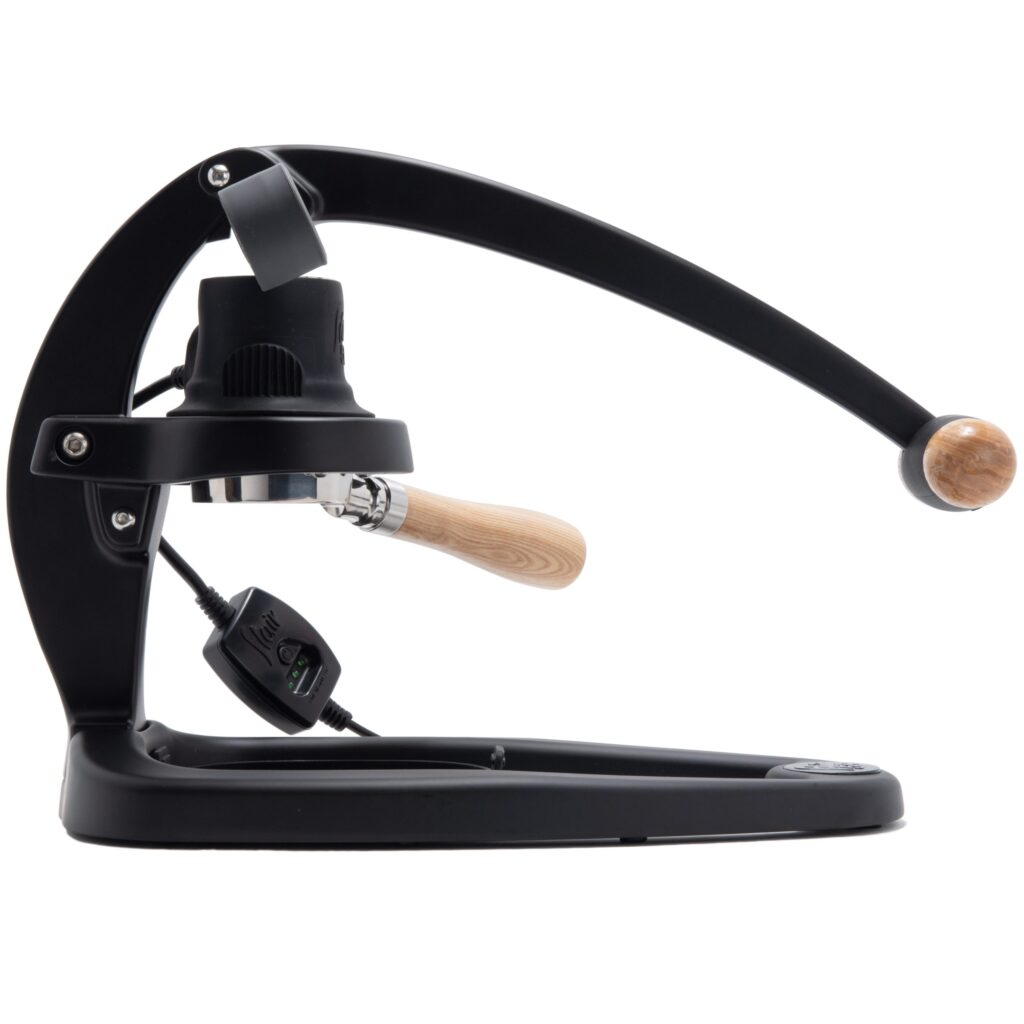
Let nature’s serenity and specialty coffee’s aroma awaken your senses and ignite your passion for the art of outdoor brewing.
So, grab your gear, embrace your inner barista, and let’s make memories in the great outdoors!
In the vast and diverse world of coffee, coffee alternatives, and tea, Olivia has found her calling. As an author and a dedicated coffee and tea aficionado, her work for Cappuccino Oracle reflects her profound love and understanding of the intricate complexities found within these beverages. Olivia’s passion for the subject serves as both a catalyst for her creativity and a connection point with her audience.
Olivia’s appreciation for coffee, coffee alternatives, and tea blossomed at an early age. She discovered that these beverages invigorated her senses and stimulated her creative spirit. From the nuanced flavors of single-origin roasts to the captivating narratives intertwined with coffee, coffee alternatives, and tea trade and culture, Olivia found an unlimited source of inspiration in her daily cup.
Her love for these beverages and her talent for storytelling eventually converged at Cappuccino Oracle. As an author, Olivia’s mission is to illuminate the intricate tapestry that makes up the world of coffee, coffee alternatives, and tea. Her articles span a diverse range of topics, encompassing everything from the unique flavors of different brews to the sociocultural history intertwined with their cultivation and consumption.
Espresso
Mochaccino – What Is It and How Do You Make It at Home
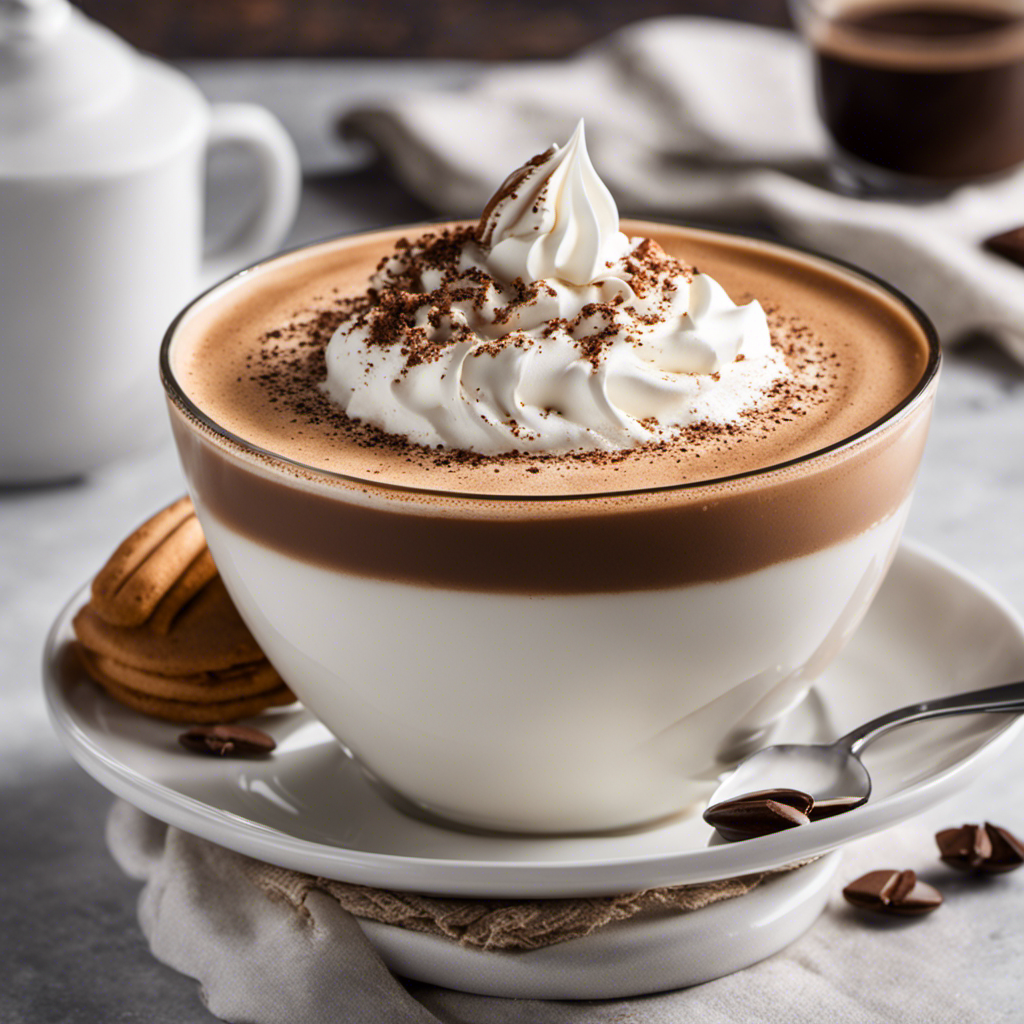
Have you ever pondered what makes a mochaccino so irresistibly delicious? Let me share with you that it’s the impeccable combination of bold espresso, creamy chocolate, and frothy milk.
And the best part? You can easily make this indulgent treat right in the comfort of your own home. In this article, I’ll guide you through the history, ingredients, and step-by-step process of creating the perfect homemade mochaccino.
Get ready to impress your taste buds and become your very own barista!
Key Takeaways
- The mochaccino originated in Italy in the 17th century as a combination of espresso and hot chocolate.
- The flavors of the mochaccino have evolved over time, with variations including caramel, vanilla, and peppermint.
- The cultural significance of the mochaccino varies in different countries.
- To make a homemade mochaccino, you will need strong brewed coffee, cocoa powder, milk, sugar, and whipped cream for topping.
History of the Mochaccino
I’ve read about the history of the mochaccino, and it’s fascinating how this delightful drink has evolved over the years.
The mochaccino, also known as a mocha, originated in Italy in the 17th century. It started as a combination of espresso and hot chocolate, creating a rich and indulgent beverage.
As time went on, the flavors of the mochaccino began to evolve. Today, you can find variations with added flavors like caramel, vanilla, or even peppermint.
In different countries, the cultural significance of the mochaccino varies. In Italy, it’s a staple in their coffee culture, while in the United States, it has become a popular choice among coffee enthusiasts.
The mochaccino has truly become a global favorite, adapting to different tastes and preferences around the world.
Ingredients for a Homemade Mochaccino
I can make a delicious homemade mochaccino with just a few simple ingredients and a little bit of time.
The key to a perfect mochaccino is combining the rich flavors of coffee and chocolate. For this, you’ll need strong brewed coffee, cocoa powder, milk, sugar, and whipped cream for topping.
To start, mix cocoa powder with a small amount of hot water to create a smooth paste. Then, heat milk on the stovetop until hot but not boiling. Add the cocoa paste and sugar to the milk, stirring until dissolved.
Next, pour the coffee into a mug and slowly pour the milk mixture over it. Finally, finish with a dollop of whipped cream. It’s a delightful treat that combines the best of both worlds – coffee and chocolate.
And if you’re looking for coffee alternatives or health benefits, a homemade mochaccino is a perfect choice.
Step-by-Step Guide to Making a Mochaccino at Home
With just a few simple steps and some common ingredients, you can easily make a delicious mochaccino at home. Here’s how:
-
Start by brewing a strong cup of coffee using your preferred method. You can use a traditional drip coffee maker, a French press, or even try alternative brewing methods like pour-over or cold brew for a unique flavor profile.
-
While your coffee is brewing, warm up some milk on the stove or in the microwave. You can use any type of milk you prefer, such as dairy milk, almond milk, or oat milk.
-
Once your coffee is ready, pour it into a mug and add a tablespoon or two of cocoa powder. Mix until the cocoa powder is fully dissolved.
-
Finally, pour the warm milk into the mug and stir well. You can also top it off with some whipped cream or chocolate shavings for an extra indulgent touch.
Making your own mochaccino at home not only allows you to control the quality of ingredients but also offers health benefits. The coffee provides a boost of energy and can improve cognitive function, while cocoa powder is rich in antioxidants and can boost mood. Additionally, using alternative milk options can cater to dietary preferences or restrictions.
Variations and Additions to the Classic Mochaccino Recipe
There are many ways to elevate the classic mochaccino recipe, such as adding a dash of cinnamon or a drizzle of caramel syrup for a hint of sweetness. But have you ever considered exploring different types of mochaccinos for their unique flavors and health benefits? Let’s take a look at some interesting variations:
| Type | Flavor Profile | Health Benefits |
|---|---|---|
| Matcha Mochaccino | Earthy and Creamy | High in antioxidants |
| Coconut Mochaccino | Rich and Nutty | Boosts metabolism |
| Protein Mochaccino | Creamy and Filling | Provides muscle recovery |
These different types of mochaccinos not only offer a diverse range of flavors but also come with their own set of health benefits. Now that we’ve explored the possibilities, let’s move on to some tips and tricks for perfecting your homemade mochaccino.
Tips and Tricks for Perfecting Your Homemade Mochaccino
To achieve the perfect homemade mochaccino, don’t forget to froth the milk until it reaches a creamy consistency. Frothing the milk adds that luxurious touch to your drink, creating a velvety texture that perfectly complements the rich flavors of chocolate and espresso.
Here are some tips and tricks to help you perfect your homemade mochaccino:
-
Use high-quality coffee beans: The best coffee beans for a mochaccino are those with a bold flavor profile. Look for beans with a rich, chocolaty undertone to enhance the chocolate flavor in your drink.
-
Experiment with homemade coffee alternatives: If you’re looking to switch things up, try using alternative coffee options like cold brew or espresso powder. These can add a unique twist to your mochaccino.
-
Adjust the sweetness: Mochaccinos are typically sweet, but you can adjust the sweetness to your preference. Add more or less chocolate syrup or sweetener to achieve the perfect balance for your taste buds.
-
Get creative with toppings: Don’t forget the finishing touches! Whipped cream, chocolate shavings, or a sprinkle of cinnamon can elevate the presentation and add an extra layer of flavor to your homemade mochaccino.
Frequently Asked Questions
Can I Use Regular Coffee Instead of Espresso in a Homemade Mochaccino?
Yes, you can use regular coffee instead of espresso in a homemade mochaccino. However, using espresso will give your drink a stronger and richer flavor, which is one of the benefits of using it.
How Many Calories Are in a Homemade Mochaccino?
I made a homemade mochaccino with whole milk and dark chocolate syrup. It has around 200 calories, but the nutritional value may vary depending on the ingredients used.
Can I Use Almond Milk Instead of Cow’s Milk in a Homemade Mochaccino?
Yes, almond milk can be used as a dairy-free alternative in a homemade mochaccino. It provides a creamy texture and a nutty flavor that complements the coffee and chocolate.
What Type of Cocoa Powder Is Best for Making a Mochaccino at Home?
When making a mochaccino at home, it’s important to choose the best cocoa powder. Look for high-quality brands, like Ghirardelli or Valrhona, for a rich and delicious flavor. Don’t forget to consider alternative milk options, like almond milk, for a dairy-free version.
Can I Make a Mochaccino Without a Milk Frother?
Sure, you can make a mochaccino without a milk frother. There are alternative methods like using a whisk or a handheld frother. These frothing techniques will give you a similar creamy texture.
Conclusion
In conclusion, the mochaccino is a beloved coffee beverage that combines the rich flavors of chocolate and espresso.
By following the step-by-step guide and using high-quality ingredients, you can easily make a delicious mochaccino at home.
Don’t be afraid to get creative with variations and additions to suit your taste.
With a little practice and a few tips and tricks, you’ll be able to perfect your homemade mochaccino and enjoy this indulgent treat whenever you like.
Justin is a seasoned author, coffee and tea enthusiast, and an essential member of the Cappuccino Oracle team. With a keen appreciation for the complexities of coffee, coffee alternatives, and tea, Justin has dedicated his professional career to exploring these realms and sharing his insights with readers worldwide.
Justin’s immersion in the world of coffee, coffee alternatives, and tea began at a young age, kindling a passion that extended beyond mere consumption. This love for these beverages led him to combine his talent for writing with his devotion to coffee and tea, bringing him to Cappuccino Oracle as a dedicated author.
Espresso
Iced Macchiato – What Is It and How to Make It at Home
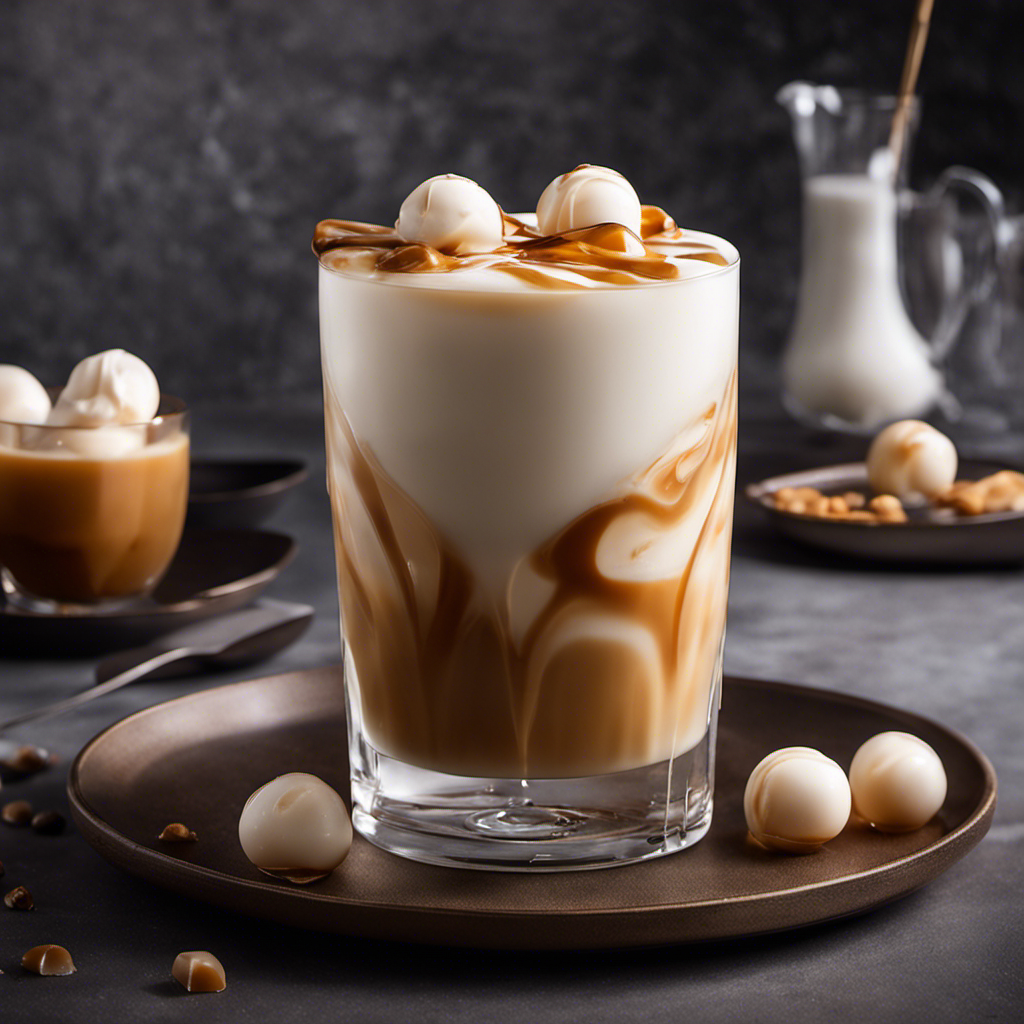
I enjoy a delicious iced macchiato on a warm summer day. Were you aware that it’s surprisingly simple to prepare at home? With just a few basic ingredients and some knowledge, you can savor this invigorating coffee drink whenever you desire.
In this article, I’ll share with you the secrets to making the perfect iced macchiato, from brewing the espresso to frothing the milk.
So grab your favorite mug and let’s get started!
Key Takeaways
- Iced macchiato originated in Italy as a variation of traditional macchiato.
- The base ingredients of an iced macchiato are espresso, milk, sweetener (optional), and ice.
- Brewing espresso for an iced macchiato requires precision and consideration of factors like grind size, brewing time, and water temperature.
- Frothing milk for an iced macchiato involves using techniques like using cold milk, alternative milk options, and a steam wand or frother.
The Origins of Iced Macchiato
I’ve always been curious about the origins of the iced macchiato. This popular coffee beverage has its roots in Italy, where the term ‘macchiato’ means ‘stained’ or ‘marked.’ Traditionally, a macchiato is made by adding a small amount of espresso to a cup and then ‘staining’ it with a dollop of frothed milk.
The iced macchiato, however, is a variation that emerged in recent years. It’s made by pouring espresso over a glass filled with ice and then adding a small amount of milk or milk foam. The result is a refreshing and flavorful drink, perfect for hot summer days.
Nowadays, there are many variations of the iced macchiato, with different flavors and toppings added to enhance the taste. From caramel to vanilla to chocolate, there’s an iced macchiato for every coffee lover’s preference.
Understanding the Ingredients
Understanding the ingredients is essential for making a delicious iced macchiato at home. When it comes to flavor profiles, the combination of sweet and bitter is what makes an iced macchiato so enticing. Here are some key ingredients to consider:
- Espresso: The base of an iced macchiato, providing a strong and rich flavor.
- Milk: Adds creaminess and balances out the espresso’s intensity.
- Sweetener: Optional, but commonly used to enhance the overall taste.
- Ice: Keeps the drink refreshing and cold.
- Optional flavorings: Vanilla, caramel, or chocolate syrups can be added for extra flavor.
Understanding different brewing methods is also important. Whether you prefer using an espresso machine, a French press, or a moka pot, each method can influence the taste and strength of your iced macchiato. Experimenting with different brewing techniques and ratios will help you find the perfect balance of flavors for your homemade iced macchiato.
The Art of Brewing Espresso
Brewing espresso is an intricate process that requires precision and skill. To achieve the perfect cup, espresso brewing techniques and the importance of water temperature can’t be overlooked.
When it comes to espresso brewing techniques, there are various methods to choose from. Some popular ones include the classic manual espresso machine, the convenient pod-based system, and the modern espresso machine with advanced features. Each technique requires careful consideration of factors such as grind size, brewing time, and pressure.
However, one common factor that’s crucial in all techniques is water temperature. The ideal water temperature for brewing espresso is between 195°F and 205°F. This range ensures proper extraction of flavors and oils from the coffee grounds, resulting in a rich and balanced espresso shot.
Transitioning to the next section, after perfecting the espresso shot, the focus shifts to perfecting the milk froth.
Perfecting the Milk Froth
I absolutely love experimenting with different techniques to perfect the milk froth for my iced macchiatos. It’s an art form in itself, and getting that perfect creamy texture on top of my espresso is essential for a delicious drink.
When it comes to creating the perfect milk froth, there are a few things to consider. Here are some tips to help you explore alternative milk options and troubleshoot common frothing issues:
- Use cold milk: Starting with cold milk will help create a better froth.
- Choose the right milk: Experiment with different types of milk, such as almond, oat, or soy, to find the one that froths best for you.
- Froth the milk properly: Use a steam wand or a frother to create a creamy and velvety texture.
- Watch the temperature: Overheating the milk can result in a burnt taste, so make sure to stop frothing when the milk reaches around 150°F.
- Clean and maintain your equipment: Regularly clean your steam wand or frother to ensure optimal frothing performance.
By following these tips, you’ll be on your way to creating the perfect milk froth for your iced macchiatos, and exploring alternative milk options along the way.
Happy frothing!
Step-by-Step Guide to Making Iced Macchiato at Home
To make an iced macchiato at home, I followed a simple step-by-step guide using a shot of espresso, a splash of milk, and a drizzle of caramel syrup.
First, I brewed a strong shot of espresso and let it cool.
Then, I filled a glass with ice and poured the espresso over it.
Next, I added a splash of milk, using almond milk as an alternative option for a creamy and nutty flavor.
To enhance the taste, I drizzled caramel syrup over the top, giving it a sweet and indulgent twist.
The beauty of making an iced macchiato at home is that you can get creative with variations.
You can experiment with different types of milk, such as oat milk or coconut milk, to suit your preferences.
Additionally, you can add flavored syrups like vanilla or hazelnut to customize your macchiato even further.
Enjoy this refreshing and satisfying beverage right in the comfort of your own home.
Frequently Asked Questions
What Is the Nutritional Content of an Iced Macchiato?
The nutritional content of an iced macchiato depends on the ingredients used. It can provide benefits such as a boost of energy from caffeine, but may also have health concerns like added sugars or high calorie content.
Can I Use Any Type of Milk to Make an Iced Macchiato?
I can use any type of milk to make an iced macchiato. Options like almond, oat, or soy milk can be used as alternatives. Additionally, different types of sweeteners can enhance the flavor.
How Long Does It Take to Brew Espresso for an Iced Macchiato?
To brew espresso for an iced macchiato, I recommend using an espresso machine and grinding fresh coffee beans. It typically takes about 25-30 seconds to extract the espresso. Froth the milk using a frother or steam wand until it reaches a creamy consistency.
Can I Use a Regular Blender to Froth the Milk for an Iced Macchiato?
Yes, you can use a regular blender to froth the milk for an iced macchiato. It’s a convenient and cost-effective alternative. You can also explore different milk options like almond, oat, or soy for a unique twist.
Can I Customize the Flavor of an Iced Macchiato by Adding Syrups or Toppings?
Yes, you can customize the flavor of an iced macchiato by adding syrups or toppings. It’s a great way to experiment with different milk alternatives and create your own unique and delicious drink.
Conclusion
In conclusion, making an iced macchiato at home is a simple process that can be mastered with practice. By understanding the origins of this popular drink, familiarizing oneself with the ingredients, and perfecting the art of brewing espresso and frothing milk, anyone can enjoy a delicious iced macchiato from the comfort of their own home.
Fun fact: Did you know that iced macchiatos are the most popular coffee choice among millennials, accounting for 40% of their coffee orders?
Noah, the Editor-in-Chief at Cappuccino Oracle, plays a pivotal role in shaping the voice and vision of our renowned platform. With an unwavering passion for coffee, coffee alternatives, and tea, Noah leads Cappuccino Oracle towards new horizons in the realm of coffee journalism.
Beyond his professional responsibilities, Noah serves as a mentor and guiding force for his team. His dedication to journalistic excellence and genuine love for coffee, coffee alternatives, and tea continue to inspire and motivate the Cappuccino Oracle family. In the ever-evolving world of these beverages, Noah’s leadership ensures that our platform remains at the forefront, delivering enlightening and enjoyable content to our readers worldwide.
-

 Coffee Basics3 days ago
Coffee Basics3 days agoThe Ultimate Guide To Buying Nespresso Pods: Where And How?
-

 Coffee Basics6 days ago
Coffee Basics6 days ago11 Best Medium Roast Coffees For Your Perfect Cup
-

 Coffee Basics6 days ago
Coffee Basics6 days agoStarbucks Venti Drinks: Customization And Pricing Guide
-

 Coffee Basics2 days ago
Coffee Basics2 days agoPerfect Your Espresso With Puck Screens: A Barista’s Secret
-

 Coffee Basics5 days ago
Coffee Basics5 days agoWhat Is Half-Caff Coffee? (And How Much Caffeine Is In It?)
-

 Coffee Basics5 days ago
Coffee Basics5 days ago9 Best Ground Coffee Brands For Your Perfect Cup
-

 Coffee Basics6 days ago
Coffee Basics6 days agoCan You Froth Oat Milk? Yes, And Here Are Six Ways To Do So
-
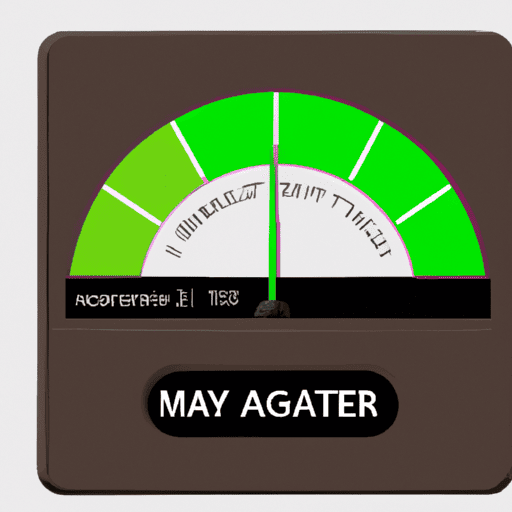
 Coffee Basics6 days ago
Coffee Basics6 days agoMaximizing Efficiency: Coffee Maker Wattage Guide







